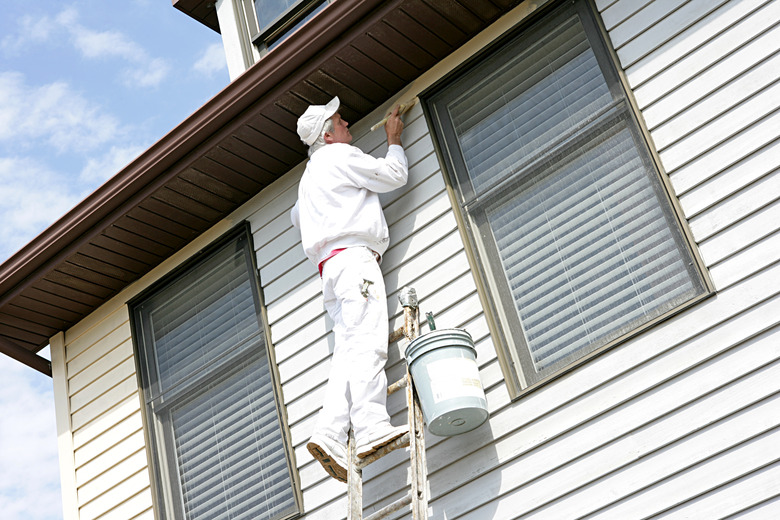How Does Temperature Affect The Drying Of Paint?
Painting a room or the side of a home is a big job. If it is too cold, the paint will have a hard time bonding to the surface. If it's too hot, the paint is forced to dry quickly, which can lead to cracking or can cause a hazy film to form on the painted surface.
Painting in Winter
An often-asked question among home painters is "Will paint dry in cold weather?" That depends. Painting the outside of your home in the middle of winter has some drawbacks, although it can be done with the right paint and weather conditions.
Aside from enduring bracing cold as you painstakingly apply a fresh coat in the cracks and crevices of your home, there are a few main reasons painting in the great outdoors in the dead of winter is a bad idea:
- Hands can cramp in the colder temperatures.
- Paint needs an environment of at least 50 degrees in order to dry properly.
- It may crack sooner than later if applied in too-cold temperatures.
- Even if it is 60 degrees during the day, if the temperature dips below 50 degrees at night, the paint structure can be compromised.
The manufacturer will have details about the conditions and temperatures in which the company's paint will work best. Some paint is made to work in temperatures as low as 35 degrees in dry winter conditions.
Science of Paint
To better understand why paint may not dry correctly or adhere to a surface due to the incorrect temperature, it helps to understand paint science.
There are four components to paint that work together to create a smooth substance that can be rolled onto surfaces.
- Binder – The type of binder determines how the paint will harden. This can be a result of curing, cooling or evaporating.
- Solvent – This is a thinner or diluent such as spirits or acetone.
- Filler – Lime, bentonite clay and talc are common to thicken the film and support the structure to increase the volume of paint. Pigments can also serve as fillers.
- Additives – These include driers to reduce drying time, dyes, stabilizing and anti-settling agents, silicones for weather resistance, texturizers and adhesion promoters.
Each of these works together to assure that the viscous liquid paint will adhere to the surface that the manufacturer recommends.
Temperatures for Painting Indoors
When painting indoors, the temperature outside isn't as important as the humidity level and ventilation in the room.
For the painting of interior rooms, professionals prefer the temperature to be between 50 degrees and 90 degrees. What is truly important when painting indoors is to have proper circulation with fans or an open window. If the weather outside is below 35 degrees and you prop open the windows to circulate the air, it could affect the drying of the paint.
Best Temperatures for Painting Outdoors
Experts agree that the best temperature to paint outdoors depends on the paint and the place. Generally, it is best to paint when the temperature is above 40 degrees and below 90 degrees. Latex paint works best when rolled on in weather that is between 50 and 85 degrees.
Painting in Humidity
The best range for painting in humid conditions is 40 to 70 percent. Humidity above 70 percent may lead to gunky, wet paint that can cause the paint to not bind to the exterior of the home. It may crack or peel within days or months of its application.
Look for days when the weather should be free of rain for at least two or three days. This will ensure that the siding or exterior materials are relatively dry and that the paint will have time to dry before the next sprinkle hits the shingles.
